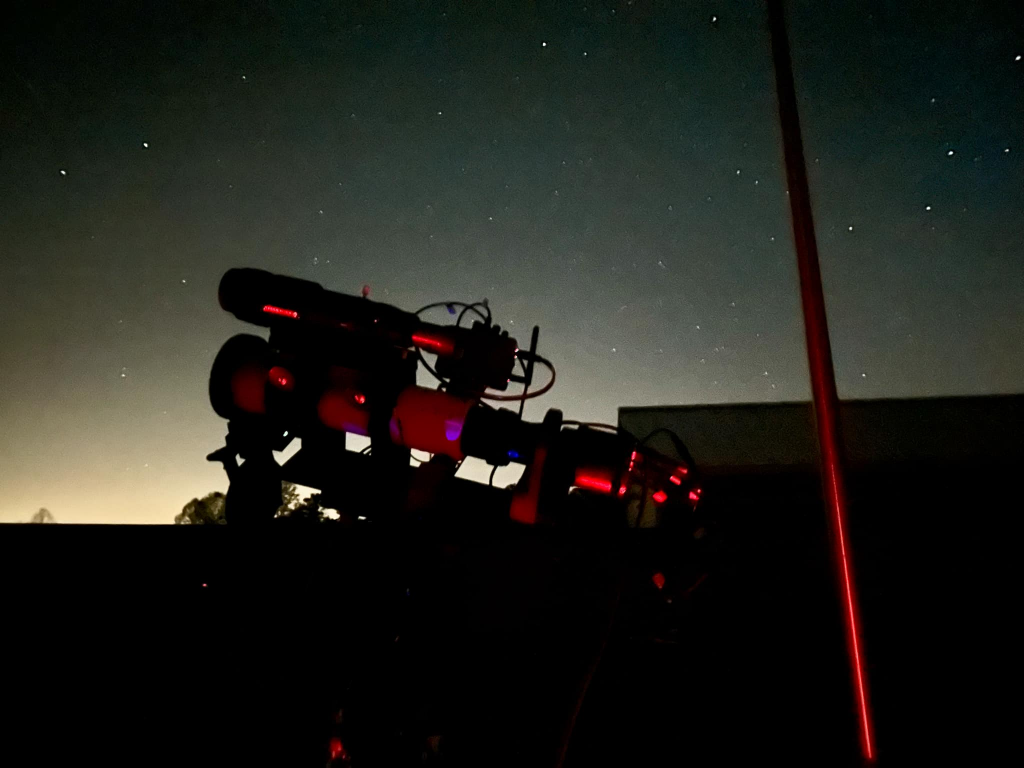In a rare confluence of clear skies and new moon in Ohio, I decided to make the trek down to the John Glenn Astronomy Park to capture some photons. Spring is Galaxy Season with no bag limit! Let’s see how this foray will go. My goal for this session is to get Markarian’s Chain with the SV70 and get more Messier objects with my Seestars for my Seestar Messier Collection.
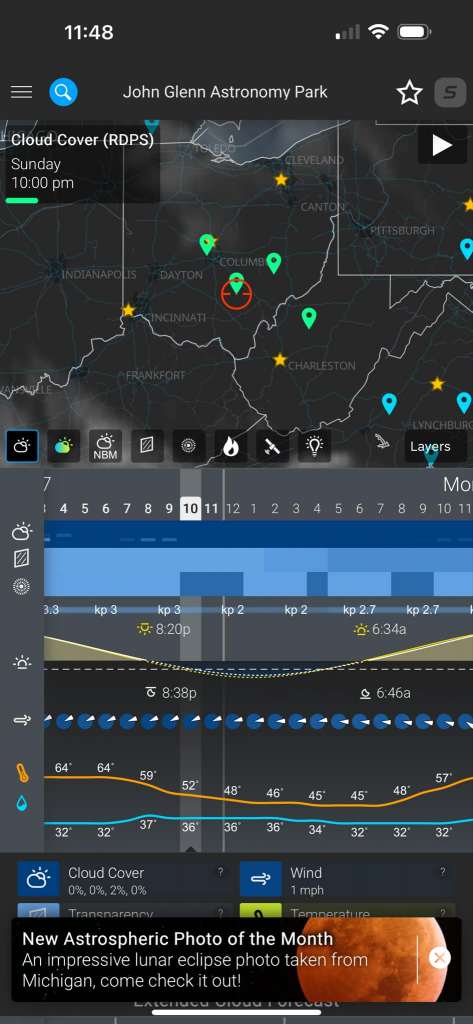
I just received my Deep Sky Dad Motorized Flap Flat Lid so prior to leaving, I got it installed on the telescope. It fits nicely, although the flap cannot move all the way back because of the obstruction of the mount. It is ok as it will stop when it hits something and does not appear to damage anything.
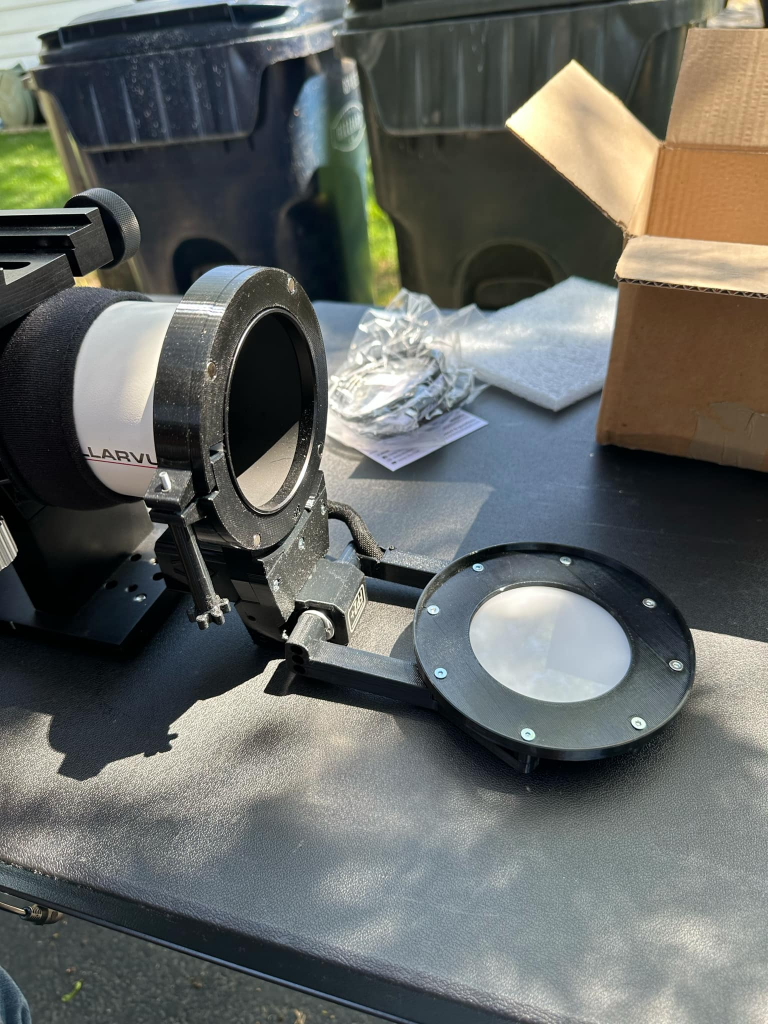
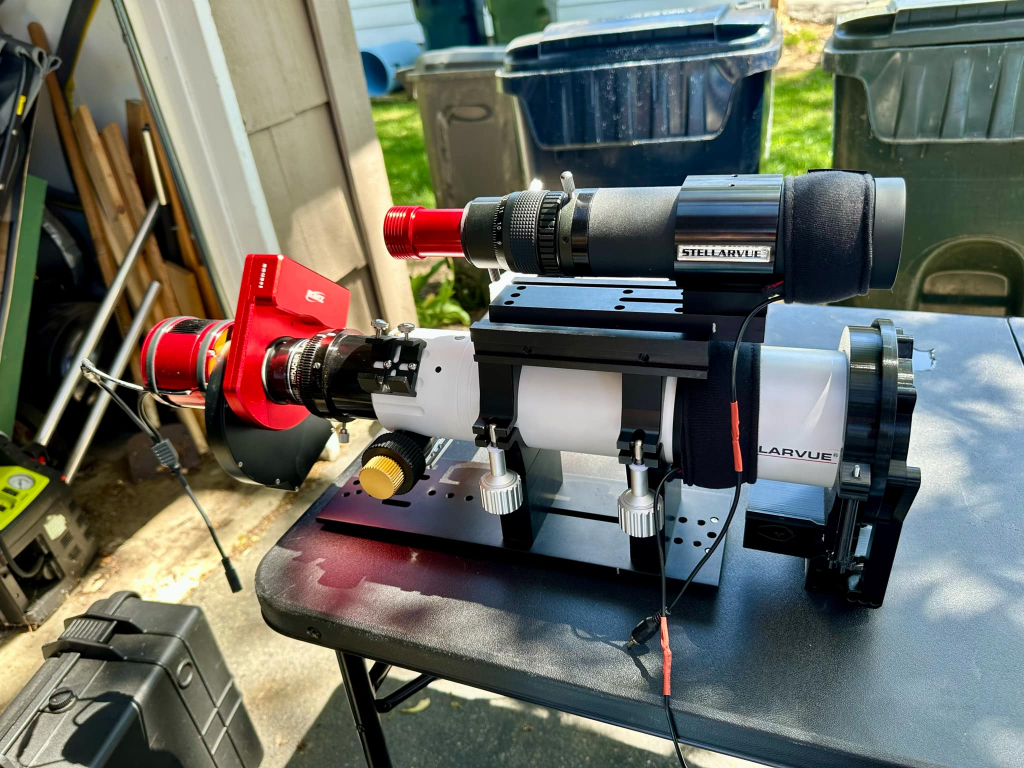
It is nice and compact and fits well on the scope. The nice thing about it is that it can be controlled completely from the ASIAir which makes the setup fully controllable remotely.
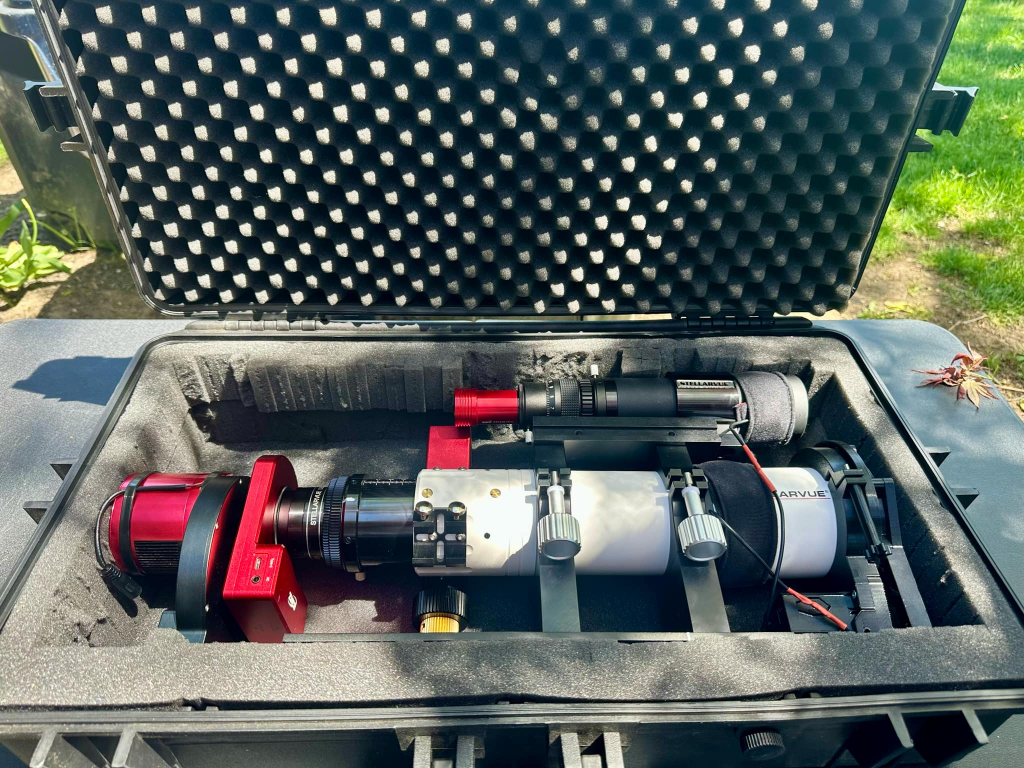
Now that the new flat panel has been tested, it is time to pack everything up and head out. I like to take my time packing everything so that I don’t forget something. One of the most frustrating things is getting all the way down to JGAP and forgetting something important. I came up with a packing system to ensure that this does not happen. Everything fits nicely in its own case and fits well with room to spare in my car.
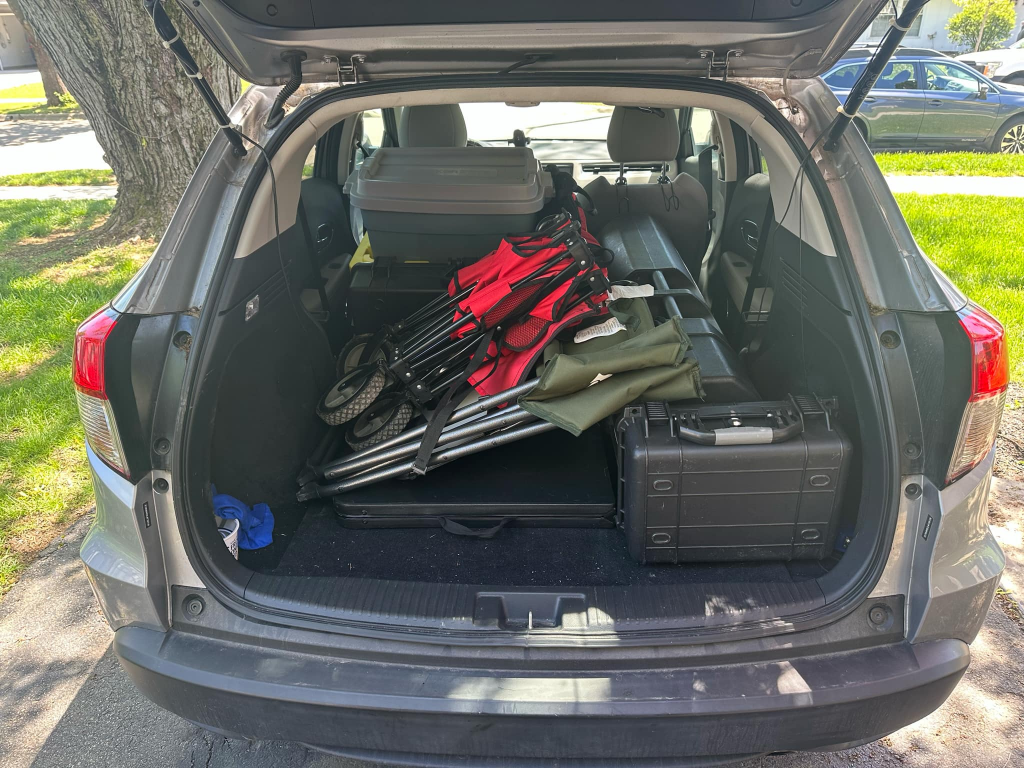
I also like to get there early with plenty of daylight left so that I can methodically get everything set up. My little buddy, “Jeepers“, comes with me to supervise setup to make sure everything is getting connected correctly.
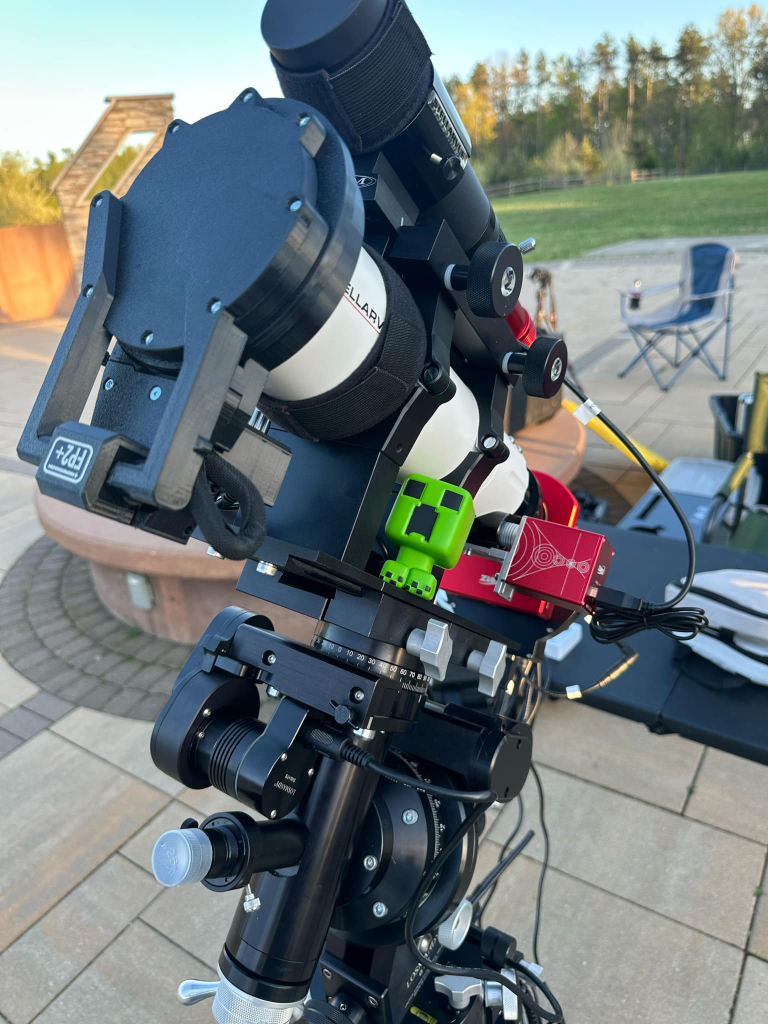
As darkness falls, it is time to get things ready. So my Losmandy GM811G mount has a bug in its firmware (which is fixed with the latest firmware release, but I have not done it yet) which reverses the Declination. I forgot to check it before getting things aligned. So this delayed my imaging run by about 20 minutes. But once fixed, the mount performs beautifully (as always).
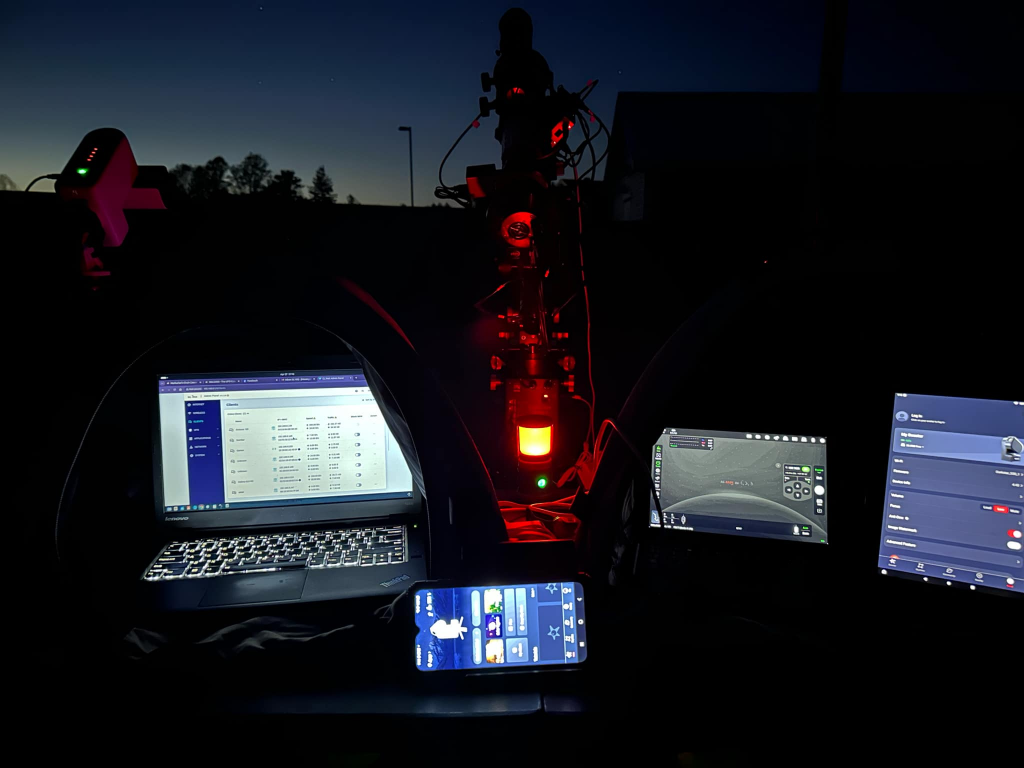
I used one of my Kindle Fires to control the ASIAir on the rig, and the other to control the Seestar S50. I have an Android phone that I use for the S30 (smaller device, smaller scope?). I did bring my Linux AstroLaptop to try out Seestar_ALP, but didn’t get around to using it.
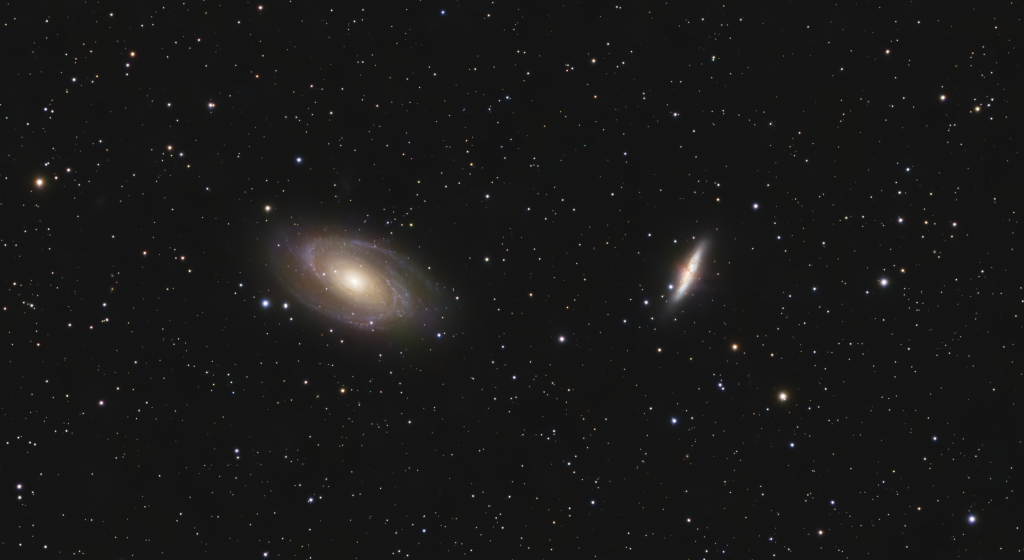
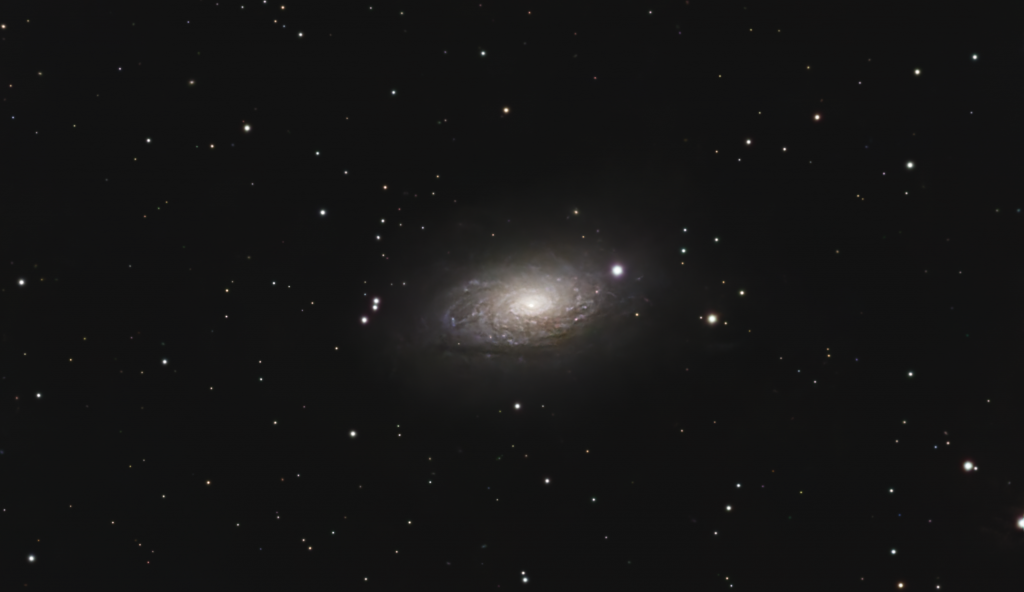
I got the Seestar S30 pointing to M81 and M82 as I have yet to get a good image of that galaxy pair. While that was going, I got the S50 taking pictures of M63. This was about the time I was working on getting the rig behaving. Once I figured it out, I began taking 180 second frames of Markarian’s Chain in Luminance.
Everything was acquiring data smoothly. One of my new friends came down to learn how to use her Seestar S50. Many of my other friends were down acquiring data. My good friend Tom had his army of Seestars ready for the night. He is able to acquire 3 times as much data as with one. So with 1 hour, he can get 3 hours worth of data! I believe he got a total of 9 hours worth of data on M81 and M82.
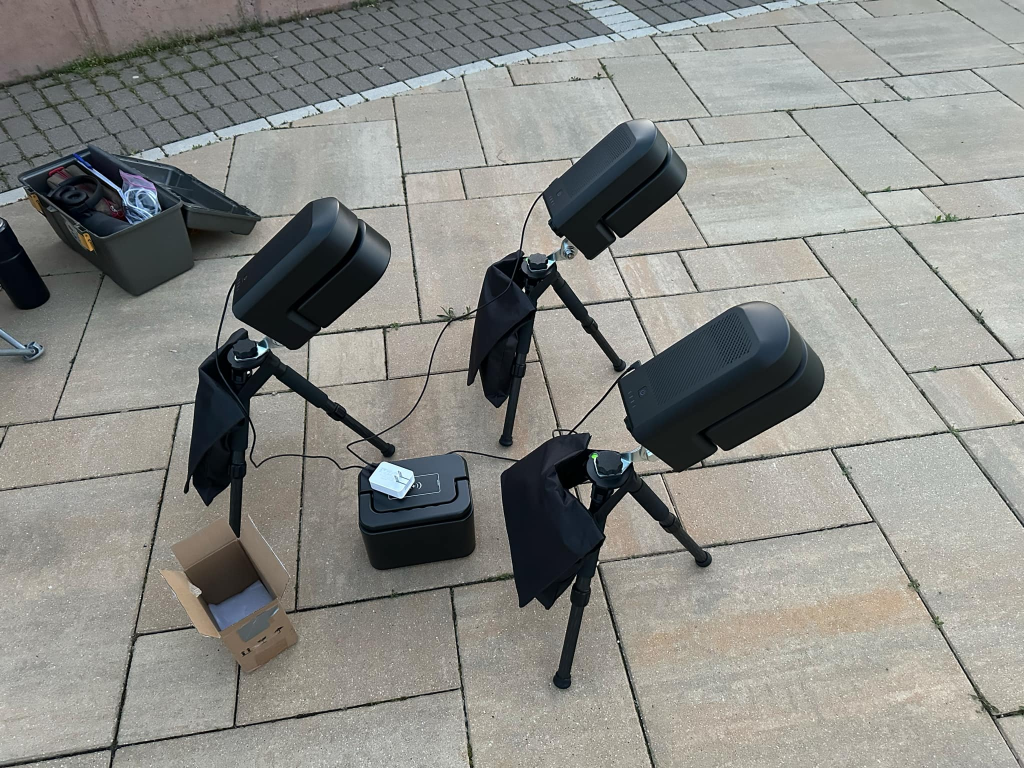
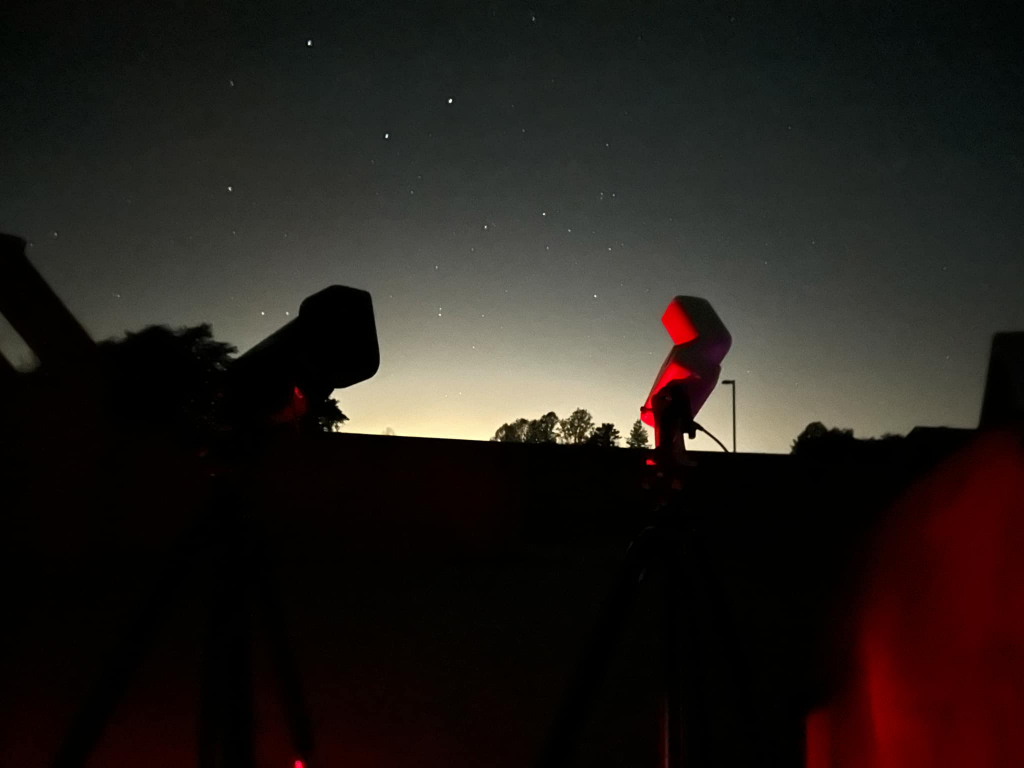
The new EQ mode on the Seestars have made this a capable instrument! I was able to get 30s subframes from both instruments. I have been working on gathering all of the Messier objects with the Seestars and I was not going to let the night go to waste. I was able to get M101 with the S30 and more galaxies with the S50.
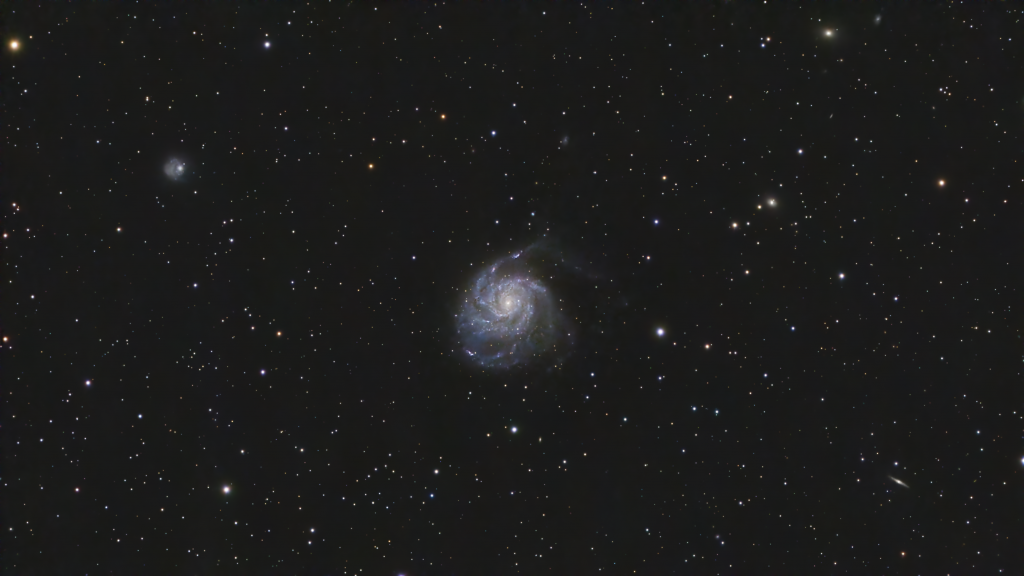
With the S50, I was able to capture M64, M90, M101, and a couple globs made it into the bag.
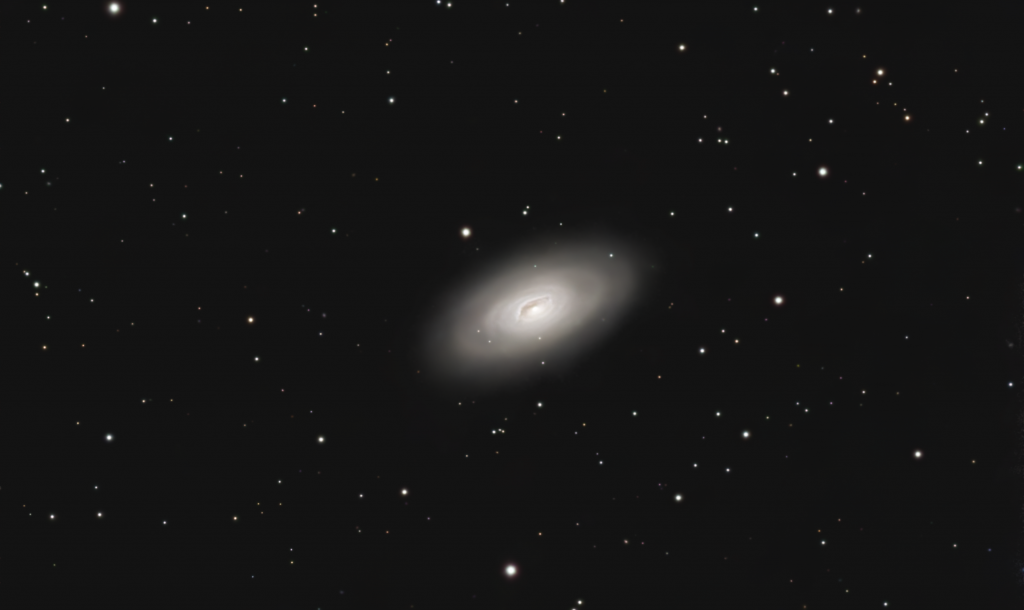
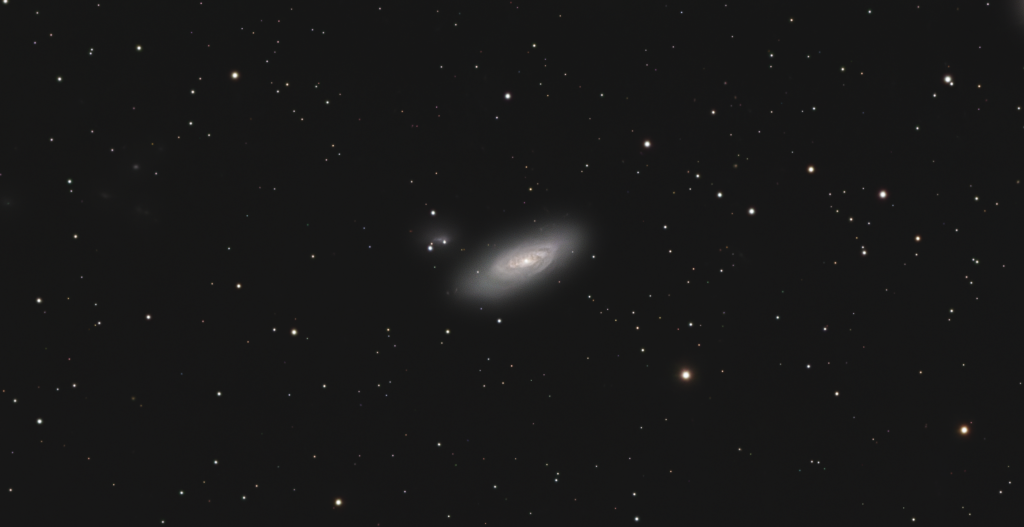
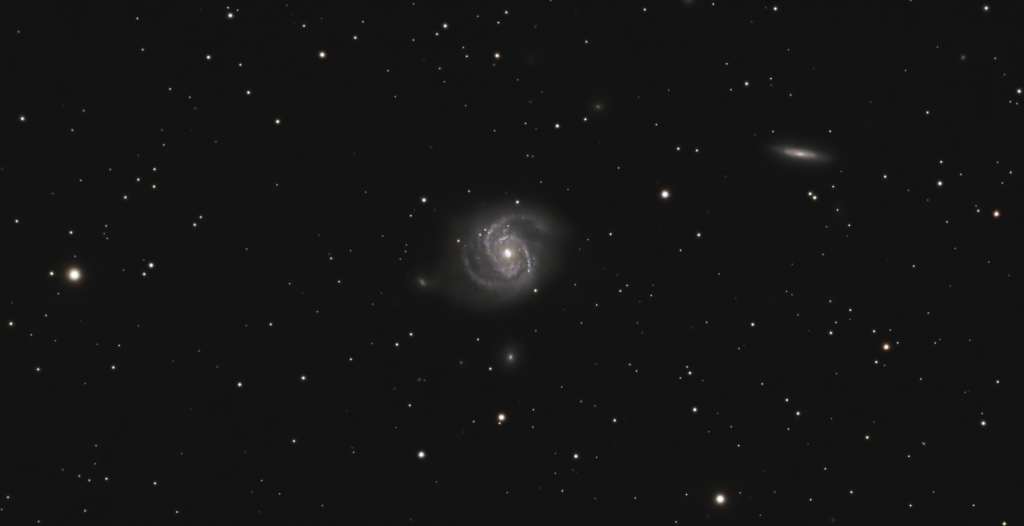
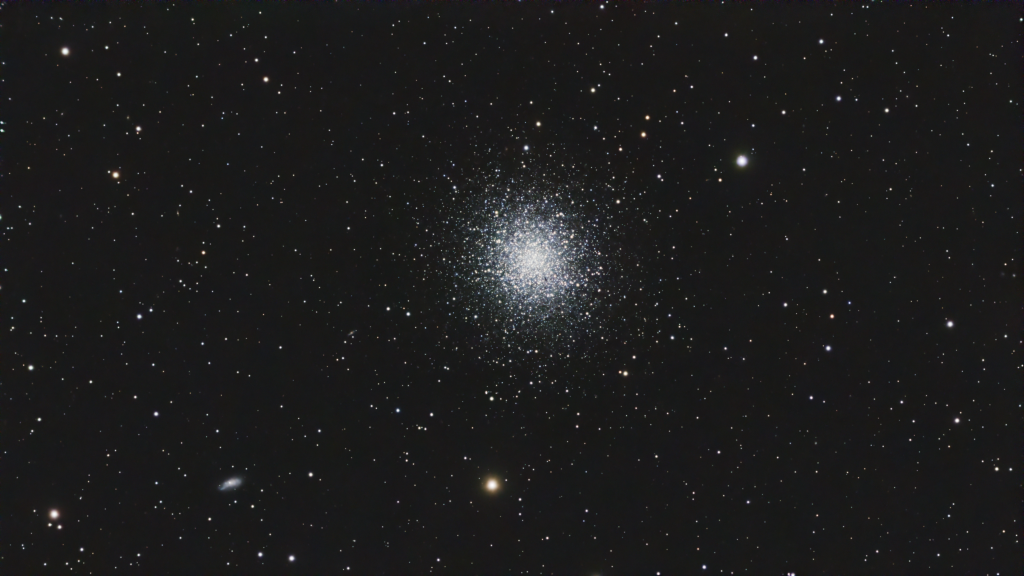
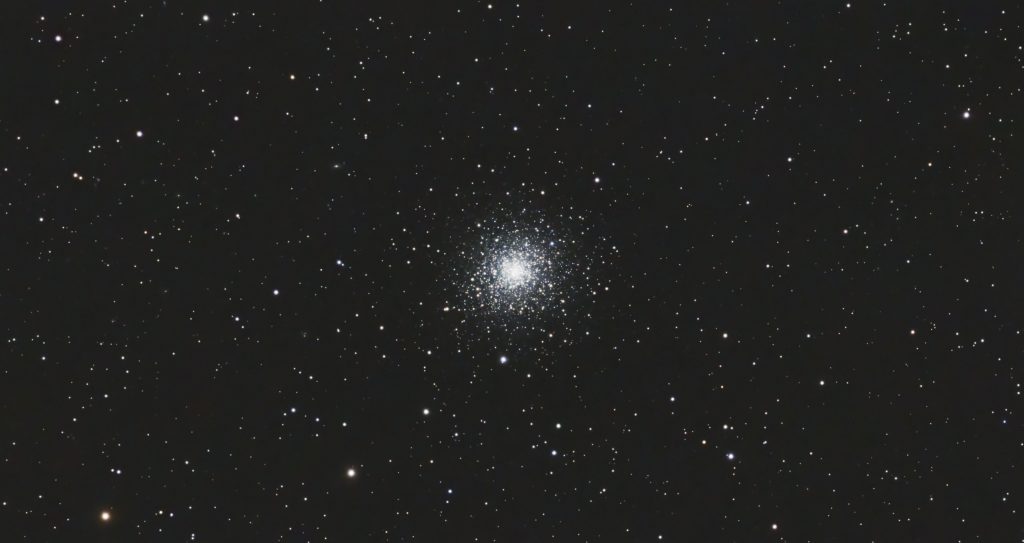
One of the nice things about using the ASIAir is that you can plan your sequence of images at the beginning of the night. It automatically went to collecting Red, Green, and Blue frames. At the end of the night, it was time to use the new Flip Flat that I installed. I simply enabled it in the ASIAir and started capturing my flat frames without having to touch the telescope at all. The resulting flat frames turned out great!
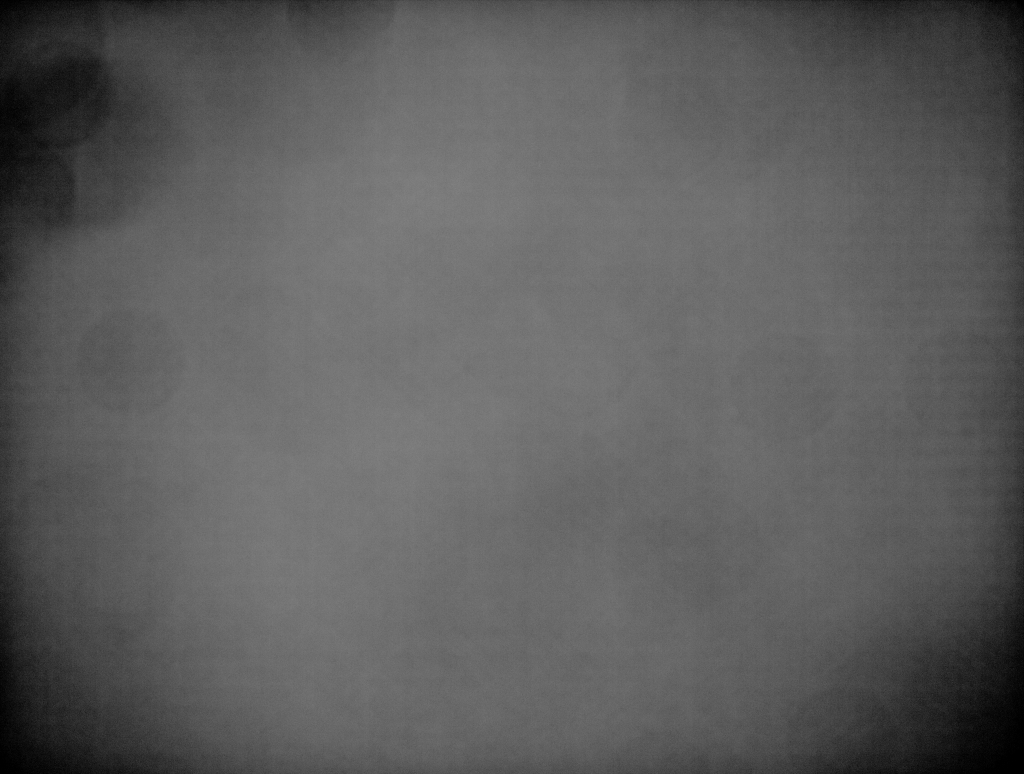
As the sun was rising, I started packing up thinking of all the data that was acquired. I am pretty pleased with the results. One of the new things I am doing is Drizzling the frames as they are integrated. I use dithering for all my images which allows me to do this. It helps with any potential noise. I have enough data to do drizzling successfully.
Processing Markarian’s Chain was fun. There are so many galaxies in this one image!
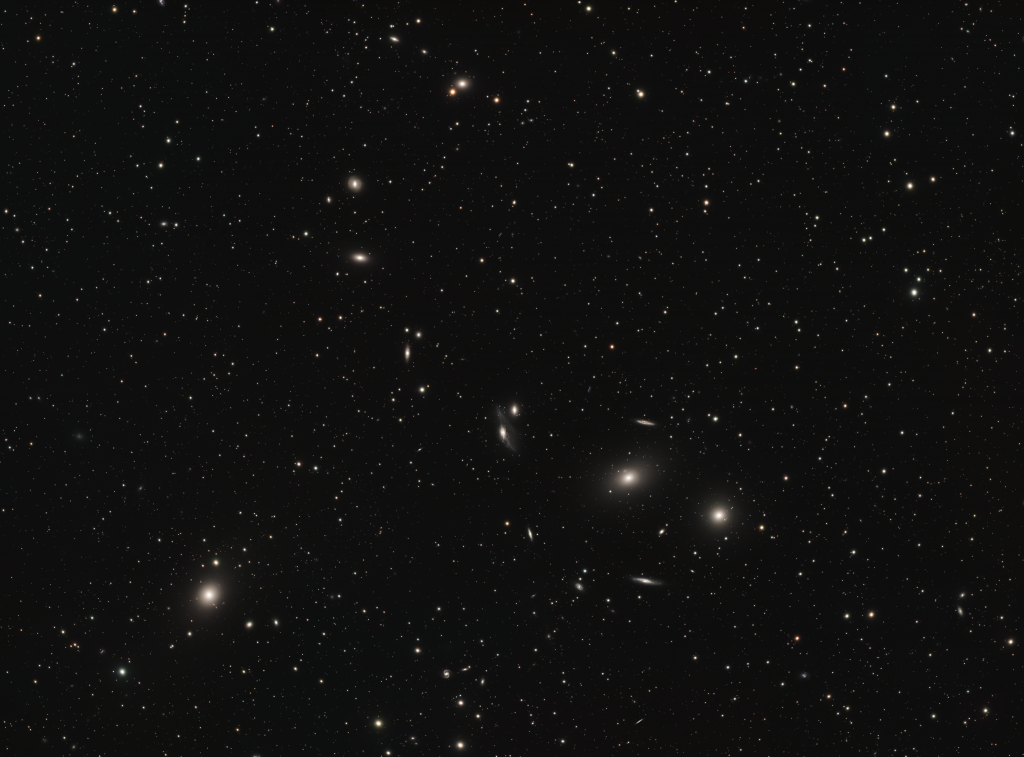
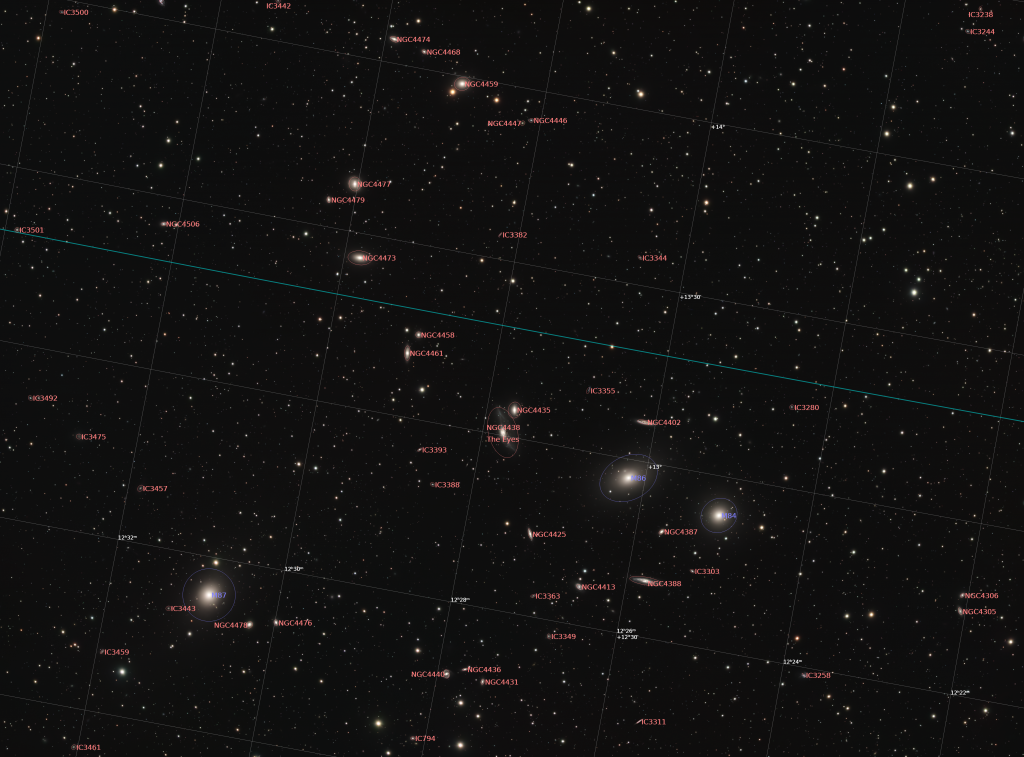
It was a great night all around. It was clear the entire night. By morning, some mid-level clouds started rolling in. It was time to head home.
